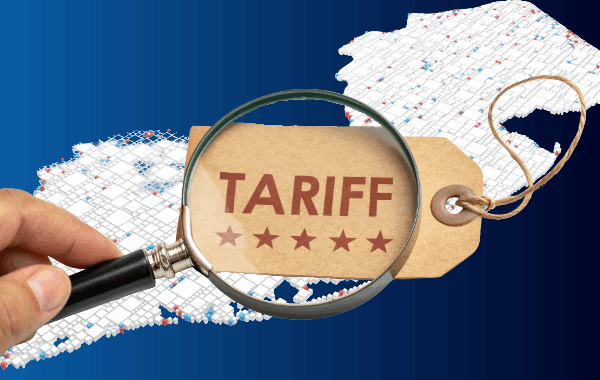Construction spending has declined for three straight months as tariff uncertainty and trade friction keeps contractors and property owners guessing about costs and demand for upcoming projects, according to a new report by the Associated General Contractors of America (AGC).
The AGC report, released Tuesday, noted overall construction spending fell -0.4% in April, the third monthly decline in a row, and is down 0.5% from April of 2024 – the first year-over-year decrease since 2019. AGC officials warned that continued decline in construction activity risks making the nation less competitive and will hurt economic growth.
“A pullback in many types of private nonresidential projects, as well as a sharp drop in homebuilding, contributed to the latest drop in construction spending,” Ken Simonson, the AGC’s chief economist, said in a statement on Tuesday. “Ever-changing announcements about tariffs on key construction inputs, along with potential retaliatory measures by U.S. trading partners, are making owners hesitant to commit to new projects.”
Overall construction spending totaled $2.15 trillion at a seasonally adjusted annual rate in April, which is -0.4% below the revised spending estimate for March ($2.16 trillion). The -0.4% monthly decline in April followed decreases of -0.8% in March and -0.7% in February.
The Associated Builders and Contractors (ABC), another national construction industry trade group, also said that the U.S. Census data released Monday underscores the headwinds the industry faces due to trade policy uncertainty, high interest rates, and tight lending standards.
“Nearly 22% of contractors reported tariff-related project delays or cancellations in April, and despite changes to certain import tax rates in May, policy uncertainty remains extraordinarily elevated,” said ABC Chief Economist Anirban Basu.
In private nonresidential construction, spending shrank by -0.5% for the month of April. The year-over-year increase of 1% was the smallest since July 2021. Spending on the largest private segment, manufacturing plants, slipped -0.6% in April. Private power construction spending fell -0.7%. Commercial construction — warehouse, retail, and farm projects – declined -1%.
Private residential construction slid -0.9% percent for the month and -4.8% percent from April 2024. Single-family homebuilding slumped -1.1% and spending on improvements to owner-occupied homes fell -0.8%. Multifamily construction inched down -0.1%.
Public construction increases softened the overall decline. Public spending climbed 0.4% from March and is up 5.5% from April 2024. Of the three largest public construction categories, highway and street construction rose 0.5% in April, spending on educational structures edged down -0.1%, and spending on transportation facilities rose 0.7%.
AGC officials said frequent changes in announced tariffs were making it difficult to know what the cost of projects would be, while countermeasures by U.S. trading partners and a drop in foreign visitors were causing owners to postpone or cancel new projects.
“Unless contractors and investors have greater certainty about what costs and demand to expect, private construction is likely to continue declining,” AGC CEO Jeffrey D. Shoaf said. “That will make the U.S. less competitive and damage the prospects for economic growth.”
On Wednesday, tariffs doubled on imported aluminum and steel from 25% to 50% in a move the president said in his June 3 executive order would address trade practices that undermine U.S. national security and would help revitalize the U.S. steel industry.
While the U.S. domestic steel producers and unions praised the new higher tariffs, companies that use steel and aluminum to make products have been critical, saying tariffs add costs for American consumers by driving up the price of homes, cars, and other manufactured items.
Canada was the largest foreign supplier of both steel and aluminum to the United States in 2024, according to the International Trade Administration. Mexico, Brazil, South Korea and Germany are also major suppliers of steel, while the United Arab Emirates, China and South Korea supply the United States with smaller amounts of aluminum.




